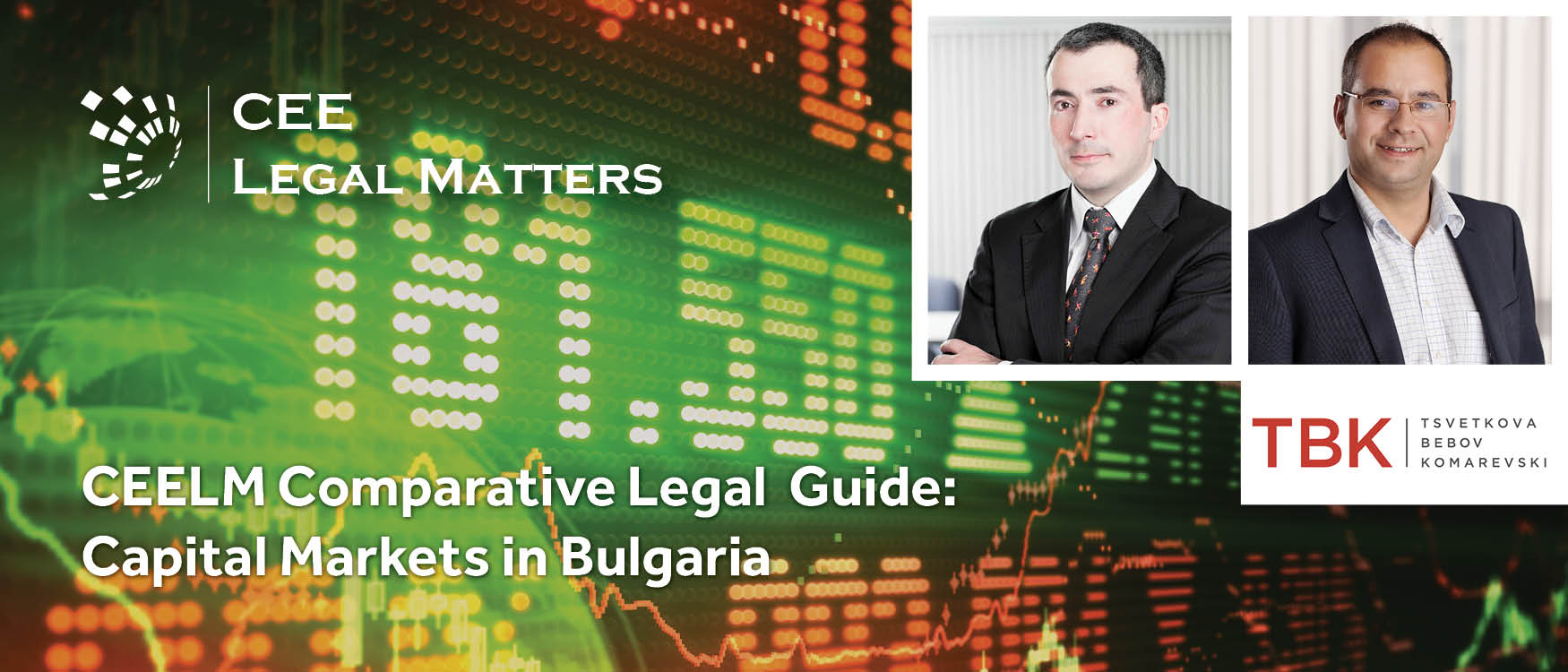Contributed by Kinstellar.
1. Market Overview
The Hungarian Stock Exchange, the predecessor of today’s Budapest Stock Exchange (BSE), was established in 1864 and operated as one of Europe’s leading exchanges until it was disbanded in 1948. After the fall of communism in 1990, it was re-established with great impetus, and a total of 60 initial public offerings took place between 1990 and 1998. Despite significant economic growth, the annual number of listings has not increased since then, meaning Hungary still lags far behind in terms of the number of listings compared to Western European counterparts.
Although Hungary has a well-established stock exchange and the BSE is the second largest stock exchange in Central and Eastern Europe based on capitalisation and liquidity, IPOs are not that common, given that only a couple of companies choose to go public each year. Companies that opt to go public mainly belong to the financial, energy, pharmaceutical and telecommunication sectors, as it is mainly companies belonging to these sectors which tend to grow large enough for an IPO in Hungary to become an option in the first place. However, there is an increasing effort on the part of the central bank and the stock exchange to encourage more companies to go public.
In any event, large capital markets transactions that draw the intention of international investors have been somewhat rare on the BSE, however, substantial transactions definitely come by. Waberer’s International Nyrt.’s IPO in 2017 serves as a perfect example of that, as it was the biggest capital market transaction of the last two decades in the life of the BSE. Apart from that, notable transactions in the last couple of years include the IPO of AutoWallis Plc. and the IPO of MKB Bank Nyrt. in 2019.
Before 2019, the local debt capital market had been relatively under-developed and did not provide financing to complement bank lending. However, in order to diversify and improve the debt capital market, the National Bank of Hungary (NBH) launched a corporate bond purchasing programme called Bond Funding for Growth Scheme (BGS) in 2019 with an initial total amount of HUF 300 billion, which was later extended by an add-on scheme. Under the BGS, the NBH purchases bonds having at least B+ ratings issued by non-financial corporations. The objective of BGS is to promote the diversification of funding to the domestic corporate sector and also to enhance financial stability. Listing of the BGS bonds is required on BSE’ s newly established XBond platform. To this date, there are numerous companies (mostly SMEs) that participated in the BGS and registered their bonds on the XBond platform.
2. Overview of the local stock exchange and listing segments (markets)
The BSE is the dedicated stock exchange in Hungary. In addition, it is the only “regulated market” in Hungary within the meaning of the EU Directive on Markets in Financial Instruments (No. 2014/65/EC) (MiFID II), where equity and debt securities may be listed.
2.1. Regulated markets
The BSE has the following market segments that qualify as a regulated market within the meaning of MiFID II:
2.1.1. BSE Prime
To be listed on the Prime Market, the issuer must meet several criteria regarding market capitalisation, ownership structure (free-float) and corporate history. Carrying out a public transaction (IPO) is mandatory at listing, however, such obligation may be postponed in certain circumstances. The share series on BSE Prime Market are more liquid in general and have a broader ownership structure than the BSE Standard.
2.1.2. BSE Standard
For small and medium-sized enterprises who instead of using BSE Xtend as the access point to access the regulated market consider executing a public transaction at their initial listing, BSE provides an opportunity to enter the market with less stringent listing requirements than those required by the Prime Market. Carrying out a public transaction (IPO) is not mandatory at listing (i.e., technical listing is possible).
2.2. Non-regulated market
The BSE has the following platforms that qualify as a multilateral trading facility (MTF) within the meaning of MiFID II:
2.2.1. BSE Xtend
The Budapest Stock Exchange opened its first multilateral trading facility called BSE Xtend in September 2017 as a replacement of the BSE T Category listing. BSE Xtend provides opportunities for small and medium-sized enterprises which are planning significant business growth, looking for external financing and are able to fulfil the requirements of the multilateral trading market to enter the capital market and obtain funds.
The companies entering the domestic multilateral trading facility market are subject to lower fees and less complicated terms, however, the lighter conditions enable them to get used to transparency in the stock market so that they are better positioned and prepared to later access the regulated markets of the BSE such as the Prime Market.
2.2.2. BSE XBond
BSE has established XBond as a new multilateral trading facility on 1 July 2019. This market is a trading venue for corporate bonds, including those issued within the BGS program of the NBH.
Trading rules of the BSE XBond are similar to those applied in the debt securities section of BSE’s regulated market. The main difference between the two segments is the conditions of listing, since the MTF provides easier access and less administrative burden for bond issuers.
2.2.3. BETa Market
On the BETa Market multilateral trading facility platform of the Budapest Stock Exchange investors can trade with foreign equities. Trading is conducted in Hungarian forints, thus the BETa Market offers access to the equities of several European companies issued in foreign currency without the need to face currency conversion costs.
3. Key Listing Requirements
3.1. General requirements for listing on regulated markets
Only an entire series of securities may be admitted to trading on the BSE and the securities must be freely tradeable. In addition, for the purposes of admission to trading, the issuer must accept the rules and regulations of both the BSE and the Hungarian Central Depository and Clearing House (the “KELER”). KELER serves as the national and central securities depository in Hungary and provides securities settlement as part of the clearing services for the BSE. In order to list securities on the BSE, the issuer must accept the custodial certificates of KELER in relation to the proof of legal title of the securities to be listed on the BSE.
In general, unless a specific exemption is applicable under EU Regulation No. 2017/1129 (the “Prospectus Regulation”), listing of securities on a regulated market of the BSE requires the approval of the publication of a prospectus prepared in accordance with the Prospectus Regulation by the NBH, or the relevant authority of another EU member state in accordance with the Prospectus Regulation.
3.2. ECM
The listing requirements relating to equity securities vary based on the segments of the market. A Hungarian company to be listed on the regulated market has to be a public company limited by shares (in Hungarian: Nyilvanosan Mukodo Reszvenytarsasag or Nyrt.). Please see below the summarized key listing requirements with respect to the regulated market equity segments of the BSE Standard and BSE Prime as well as the multilateral trading facility platform of BSE Xtend.
3.2.1. BSE Prime – regulated market
The BSE Prime category has the highest admission standard, requiring, in general (i) at least HUF 5 billion as a minimum market value of the shares to be admitted; (ii) at least 25% of free-float; or HUF 2 billion worth of shares in free float; or a minimum of 500 shareholders; (iii) at least 3 audited financial years (discretion is possible); and (iv) a public transaction (IPO) as the method of listing, however, issuers may request a one-year postponement of the IPO in case they comply with all additional listing criteria on this segment.
A prospectus and corporate governance report shall be submitted to the NBH. Only common shares can be listed. The IFRS accounting standards are applicable in this category.
3.2.2. BSE Standard – regulated market
In order to be listed in BSE Standard category, a company is required to have (i) at least HUF 250 million as a minimum market value of the shares to be admitted; (ii) at least 10% of free-float; or HUF 100 million worth of market cap; or a minimum of 100 shareholders; and (iii) at least 1 audited business year (discretion is possible).
A prospectus shall also be submitted to the NBH. However, no public transaction is necessary upon listing (i.e., technical listing is possible) and there is no corporate governance reporting obligation on listing. The IFRS accounting standards are applicable in this category.
3.2.3. BSE Xtend –MTF
The listing requirements for this multilateral trading facility are less burdensome. There are no applicable equity class requirements, no public transaction is necessary (i.e., technical listing is possible), there is no corporate governance reporting obligation, and there are no requirements for free float or minimum audited business years.
Only an information memorandum must be submitted to the BSE (i.e., no prospectus is required under the Prospectus Regulation), provided that the total issue value does not exceed EUR 5 million. The filing authority in respect of such information memorandum is the BSE itself. Only the Local GAAP accounting standards are applicable in this category.
3.3. DCM
With respect to listing of debt securities on a regulated market of the BSE, the general requirements are applicable, with some differences in respect of certain debt securities (such as the requirement of a market making agreement in respect of structured products).
Registering debt securities on BSE XBond may be possible based on an Information Memorandum approved by the BSE if certain pre-conditions are fulfilled and provided that the prospectus preparation obligation is not triggered under the Prospectus Regulation.
4. Prospectus Disclosure
The Hungarian capital markets are regulated at EU level mainly by the Prospectus Regulation and by other harmonized EU regimes. Act No. 120 of 2001 (CMA) is the national regulatory framework for capital markets, along with the decrees of the president of the NBH, while the BSE also adopts applicable rules and implementing instructions. The NBH acts as the Hungarian financial supervisory authority tasked with the supervision of the Hungarian capital markets and the BSE. The NBH cooperates closely with the European Securities and Markets Authority (ESMA).
For the purposes of listing securities in the regulated market of the BSE, the issuer must prepare a prospectus under the Prospectus Regulation.
The disclosure obligation under the prospectus is laid out in details in the Prospectus Regulation and the relating implementing and delegated acts such as (i) the Commission Delegated Regulation (EU) 2019/979 with regard to regulatory technical standards on key financial information in the summary of a prospectus, the publication and classification of prospectuses, advertisements for securities, supplements to a prospectus; and (ii) Commission Delegated Regulation (EU) 2019/980 as regards the format, content, scrutiny and approval of the prospectus to be published when securities are offered to the public or admitted to trading on a regulated market.
Under the Prospectus Regulation, a prospectus must contain the necessary information which is material to an investor for making an informed assessment of: (a) the assets and liabilities, profits and losses, financial position, and business prospects of an issuer and of any guarantor; (b) the rights attaching to the securities; and (c) the purpose of the issuance and its impact on the issuer. Information included in the prospectus must be sufficient and objective and should be written and presented in an easily analysable, concise and comprehensible form. The information which is included in a prospectus must be adapted to the type of prospectus, the nature and circumstances of the issuer, the type of securities, and whether the targeted investors are solely qualified investors. A prospectus should not contain information which is not material or specific to the issuer and the securities concerned.
The prospectus may be drawn up as a single document or as separate documents. A prospectus composed of separate documents shall divide the required information into a registration document (including information relating to the issuer), a securities note (including information concerning the securities offered) and a summary. In Hungary, issuers predominantly elect to prepare the prospectus as a single document.
Unless a specific exemption is available, the prospectus must include a summary that provides the key information that investors need in order to understand the nature and the risks of the issuer, the guarantor and the relevant securities to aid investors when considering whether to invest in such securities. The summary of the prospectus must be short, simple and easy for investors to understand. It must be written in plain, non-technical language, presenting the information in an easily accessible way.
One of the most important part of the prospectus for investors is the section containing risk factors. The primary purpose of the risk factors is to ensure that investors make an informed assessment of the applicable risks and thus take investment decisions in full knowledge of the relevant circumstances. Risk factors must be limited to those risks which are material and specific to the issuer and its securities and which are verified by the content of the prospectus. A prospectus should not contain risk factors which are generic and only serve as disclaimers, as those could obscure more specific risk factors that investors should be aware of.
In addition, the prospectus must include, among others, the following information and statements:
(i) business overview with description of, and key factors relating to, among others, the nature of the issuer’s operations and its principal activities; principal markets, strategy and objectives;
(ii) description of the issuer’s material investments for each financial year for the period covered by the historical financial information;
(iii) organisational structure with description of the issuer’s corporate group; key subsidiaries;
(iv) audited historical financial information covering the latest three financial years and the audit report in respect of each year;
(v) details of related party transactions, that the issuer has entered into during the period covered by the historical financial information;
(vi) details of any significant changes in the financial or trading position of the company since the date of the latest published audited or interim financial information included in the prospectus, or an appropriate negative statement;
(vii) a working capital statement by the issuer that, in its opinion, the working capital is sufficient for the issuer’s present requirement;
(viii) an operating and financial review describing the company’s financial condition, changes in financial condition and results of operations;
(ix) summary of each material contract, other than contracts entered into in the ordinary course of business, to which the issuer or any member of the group is a party, for the past two years;
(x) prescribed information on the issuer’s administrative, management and supervisory bodies and senior management, including remuneration and benefits, shareholdings and stock options in the issuer; and also, with respect to the company’s corporate governance; and
(xi) a declaration by those responsible for the prospectus (including company, proposed directors, etc.) that to the best of their knowledge, the information contained in the prospectus is in accordance with the facts and that the registration document makes no omission likely to affect its import.
NBH may authorise the omission from the prospectus of certain information to be included therein, where it considers that any of the following conditions is met: (a) disclosure of such information would be contrary to the public interest; (b) disclosure of such information would be seriously detrimental to the issuer or to the guarantor, if any, provided that the omission of such information would not be likely to mislead the public; (c) such information is of minor importance in and would not influence the assessment of the financial position and prospects of the issuer or guarantor.
Once the prospectus is published, any significant new factor, material mistake or material inaccuracy which could influence the assessment of the investment, arising after the publication of the prospectus but before the closing of the offer or the start of trading on a regulated market requires a supplement to the prospectus without undue delay.
5. Prospectus Approval Process
5.1. Competent Regulator
NBH is the supervisory authority designated as competent authority within the meaning of the Prospectus Regulation and, as such, the NBH is the authority which approves the publication of a prospectus under the Prospectus Regulation in Hungary.
Otherwise, for the purposes of listing and admission to trading on BSE, the issuer must follow the general business terms of the BSE, including, in particular, ‘The General Terms of Service of the Budapest Stock Exchange Ltd.’ and, in particular, Book one thereof on ‘Regulations on Listing and Continued Trading’, which prescribes, among others, those documents that must be submitted by the issuer along with the approved prospectus for the purposes of admission to trading on the BSE.
5.2. Timeline, draft submissions, review and approval process
Once the prospectus has been drafted, it must be submitted to the NBH for approval. However, before the filing of the formal approval with the NBH, issuers usually file work-in progress / near to final drafts of the prospectus with the NBH on an informal basis to obtain and address initial comments of the NBH before the actual filing.
Otherwise, once the draft prospectus is in final form, the application for approval must be submitted to the NBH online, through the dedicated electronic submission system maintained by the NBH called ERA. It is worth noting that only pre-registered users may use the ERA system and only entities which have certified electronic signature capabilities can register themselves in the ERA system and, therefore, first-time issuers need to register themselves into such communication system before the actual filing.
Under the Prospectus Regulation, the NBH has a 10-working day deadline to decide on approval or rejection of the prospectus. However, this 10-day time limit is extended to 20 working days where the offer to the public involves securities issued by an issuer that does not have any securities admitted to trading on a regulated market and that has not previously offered securities to the public. However, failure of NBH to take a decision on the prospectus within the above time limits shall not be deemed to constitute approval of the application.
In addition, if the NBH finds that the draft prospectus does not meet the standards of completeness, comprehensibility and consistency necessary for its approval and/or that changes or supplementary information are needed, it must inform the applicant within 10 working days by clearly specifying the requested changes or additional information. In such cases, the time limits set above shall apply only from the date when a revised draft prospectus or the supplementary information is submitted to the NBH.
The publication of the prospectus is subject to the approval of the NBH.
6. Listing Process
6.1. Timeline, process with the stock exchange
After the approval of the prospectus by the NBH, an application is submitted to the BSE for the listing and admission to trading. In practice, prior to formal submission of the application the issuers usually liaise with the officers of the stock exchange in order to informally agree with them on the documents to be submitted, as well as the contents thereof. Following the formal submission of the application, the stock exchange must examine the application from a formal perspective and also in terms of content, and must decide within 30 days whether the securities may be listed. If necessary, the stock exchange may request additional information from the issuer, which must be submitted within 10 working days. In this case, the 30-day deadline is extended by the number of days needed to submit the additional information.
Two days prior to listing, the issuer must publish the required documents which may be relevant to market players when making a decision on their investment. The application is approved only if all the necessary documents have been submitted and their content is in line with the legal requirements, otherwise the application is rejected. If the application is accepted, the company may begin trading.
7. Corporate Governance
7.1. Corporate governance code / rules
The rules regarding the operation of Hungarian companies are laid out in Act No. 5 of 2013 on the Civil Code (the “Civil Code”) as well as in Act No. 57 of 1996 on the Prohibition of Unfair and Restrictive Market Practices.
Under the Civil Code, Hungarian public companies limited by shares (in Hungarian: Nyilvanosan Mukodo Reszvenytarsasag or Nyrt.) can be organised under the one-tier or the two-tier board system. The two-tier board system, which is the more common, includes the board of directors (in Hungarian: igazgatosag) and the supervisory board (in Hungarian: felugyelo bizottsag) with both consisting at least 3 members. However, the supervisory board does not generally have a decision power (but can have approval rights). All decision making is retained by the board of directors and general shareholders’ meeting. In a one-tier board system, the duties of the board of directors and the supervisory board are carried out by a single board, the management board (in Hungarian: igazgatotanacs) which consists at least 5 members. The powers to appoint or dismiss the members of the board of directors, the supervisory board and the management board or to define their remuneration are assigned to the meeting of the shareholders. Legal entities cannot serve as board members.
Except for the establishment of an audit committee, which is a regulatory requirement for public companies limited by shares, the board of directors in companies limited by shares is not required to have a committee system. However, the board of directors may establish a remuneration committee that establishes the remuneration policy of a company based on Corporate Governance Recommendations.
In addition, the BSE has issued recommendations with respect to Corporate Governance Rules, i.e., the Corporate Governance Recommendations (in Hungarian: Felelos Tarsasagiranyitasi Ajanlas) for public companies. An equity issuer seeking admission to trading on the Prime Market must publish a Corporate Governance Report before the admission to trading on the basis of Corporate Governance Recommendations of the BSE. Otherwise, equity issuers have to publish such Corporate Governance Reports along with their annual reports.
The Corporate Governance Recommendations of the BSE contain both recommendations that are binding for all issuers and non-binding proposals. Issuers may derogate both from binding recommendations and non-binding proposals. In the event of derogation from the recommendations, issuers are required to publish and justify the derogation in their corporate governance reports (‘comply or explain’).
Corporate Governance Recommendations of the BSE include, among others, recommendations on the holding of shareholder meetings; remuneration; transparency and publication; governance (including management selection principles and independence of directors), control, risk management; and external advisors/auditors.
7.2. Any other ESG considerations
Environmental, social and governance (ESG) stands for a set of standards with regards to a company’s operations that is used by a new generation of investors to monitor how socially and environmentally conscious the company is, where they invested their money. It takes into consideration the company’s environmental impact, how the company manages relationships with employees, suppliers, customers, and the communities where it operates and a company’s leadership, executive pay, audits, internal controls, and shareholder rights.
These sustainable investment types are present on the Hungarian capital markets, however, ESG considerations are not yet part of the formal corporate governance and other similar requirements in Hungary with respect to public companies.
8. Ongoing Reporting Obligations (Life as a Public Company)
8.1. Annual and interim financials and other periodic reports
Issuers of securities admitted to trading on a regulated market (such as the BSE Prime or BSE Standard) must comply with reporting obligations as laid out in the CMA and the No. 24/2008 (VIII. 15.) Decree of Ministry of Finance.
In general, such issuers must disclose to the public on a regular basis substantial details of their financial position and the general course of their business. Issuers shall, at the same time, must notify such information to the NBH as well and must ensure that such disclosed information remains publicly available for at least ten years.
To this end, issuers must publish in accordance with the requirements laid out in the No. 24/2008 (VIII. 15.) Decree of Ministry of Finance:
- a detailed annual financial report (in accordance with the IFRS, where applicable) four months after the end of each financial year at the latest; and
- semi-annual financial reports as soon as possible following the end of each half-year period in question, but by no later than three months following such period.
Beyond the financial reports, listed companies are obligated to publish, among others, corporate governance reports on an annual basis with regards to the Corporate Governance Recommendations.
Issuers with security series in BSE Prime Market shall also disclose a corporate action timetable by the first day of their financial year (including proposed dates for publication of annual, semi-annual and quarterly reports, dates for press conferences to discuss the annual report, date of annual general meeting, etc.).
Issuers under the force of the CMA must also comply with additional reporting obligations set by the CMA by disclosing the number of voting rights and the actual share capital on a regular basis. Issuers not under the scope of the CMA may choose to follow the reporting obligations of their “home member state” (as defined by the Transparency Directive - Directive 2004/109/EC of the European Parliament and of the Council) after having published a statement in which they inform Hungarian investors about the reporting requirements of that state.
All regulated information must be published on the website of the issuer, on the website of the BSE as well as on the dedicated online platform of the NBH.
In general, issuers with securities registered on a multilateral trading facility (such as Xtend or XBond) are bound by the reporting obligations prescribed by the operator of such multilateral trading facility.
8.2. Extraordinary/Ad hoc disclosures
Listed companies are also obliged to disclose to the public without delay but in any event within one business day any information that concerns, directly or indirectly, the value or return on the securities of the company, and any information that may have an impact on the reputation of the company.
No. 24/2008 (VIII. 15.) Decree of Ministry of Finance contains guidelines and examples to be followed by issuers (under the force of the CMA) regarding their extraordinary disclosures). Issuers with home member states other than Hungary follow the rules of their jurisdictions.
The NBH, when deemed necessary as the financial supervisory authority may also impose extraordinary data disclosure obligations or carry out on the spot inspections on a global scale or with regards to an individual company as part of its supervisory measures.
8.3. MAR obligations
Regulation (EU) No 596/2014 on market abuse (MAR) applies to financial instruments admitted to trading on EU regulated markets, multilateral trading facilities, organised trading facilities and other financial instruments such as credit default swaps or contracts for difference. This means that companies listed on the BSE are subject to MAR. In addition, both BSE Xtend and BSE XBond fall within the definition of a multilateral trading facility and therefore, are subject to the disclosure requirements of MAR.
The requirements of MAR include, among others, the obligation to announce inside information as soon as possible (except under certain limited circumstances) and companies have to keep and maintain insider lists of people working for them and of advisors who have access to inside information.
Breach of MAR by an individual or legal person may result in, among others, criminal penalties (e.g., cases of insider trading and market manipulation) as set out in Act No. 100 of 2012 on the Criminal Code.
























